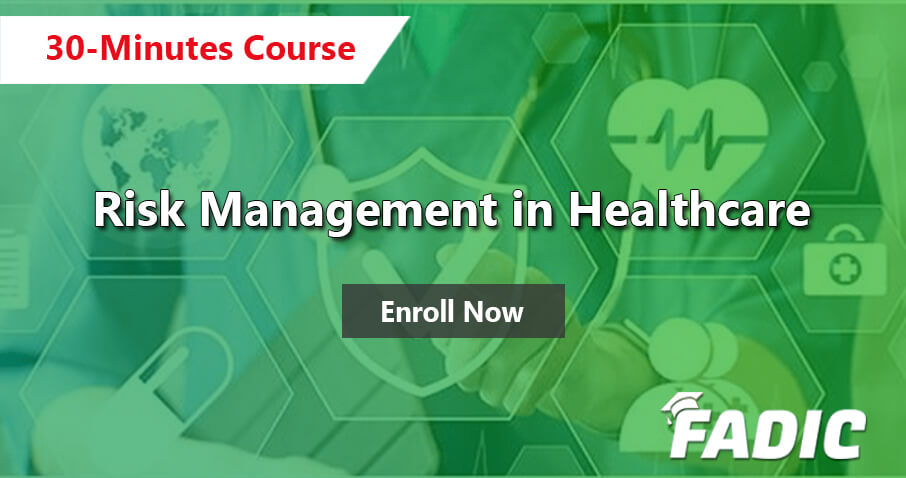
Overview
Overview
Risk Management in Healthcare Workshop
Learning Objective:
- Discuss the definition of risk management, values, and benefits.
- Explain the concept of risk reduction strategies in preventing and reducing system failures.
- Identify four principles of risk reduction strategies.
- Evaluate what makes a high alert medication list an effective risk reduction strategy.
- Distinguish the advantages and disadvantages of each type of risk reduction strategy.
- Identify three key factors that are considered during the prioritisation of risk reduction strategies
- Compare the pros and cons related to competency development and assessment.
- Key elements of the dashboard for ongoing monitoring of implemented risk reduction strategies.
- Express appropriate techniques for patient safety WalkRounds™.
Risk Management:
- Risk Management is identifying, assessing and controlling threats in the organisation.
- Threats, risks, including financial, strategic medication errors, incidence & national problems as COVID19.

What is Management?
- Management includes activities of setting the strategy of an organisation and coordinating the efforts of its employees
Objectives of Risk Management
- Ensuring organisation continuity
- Ensuring the safety of executives, employees & their families
- Protecting managerial resources
- Maintaining public trust in healthcare organisations
Factors Which Contribute to People Making Mistakes

To avoid knowledge-based mistakes, ensure supervision for inexperienced workers and provide aids and diagrams to explain procedures.
The 4 Risk Reduction Strategies
The 4 Strategies to Control Risks
- An organisation must choose four basic strategies to control risks Risk Avoidance, Risk Mitigation, Risk Transference, and Risk Acceptance.
1- Risk Avoidance
- A Risk Avoidance methodology attempts to minimise vulnerabilities which can pose a threat.
- Risk avoidance can be achieved through policy and procedure, training and education and technology implementations.
2- Risk Mitigation
- With risk mitigation is the expectation that it is not a matter of if something happens, it is a matter of when.
- And when something happens, you want policies and procedures to mitigate that.
- These risk mitigation strategies include disaster recovery plans and incident response plans.
3- Risk Transference
- It is the shifting the risk to other areas or outside entities. The goal is to allow someone else to accept risk.
- When looking at ways to transfer risk, you would evaluate things such as services.
- Many services, such as application and IT, can be outsourced.
- Hiring an outside organisation transfers the risk to them for that development.
4- Risk Acceptance
- It is to understand the consequences and accept the risk without control or mitigation.
- There will be a risk. It is impossible to eliminate risk, so needs to be an analysis of these things.
- This is achieved by determining the level of risk to the information.

If you have any inquiry, please contact WhatsApp.

Curriculum
-
Risk Management in Healthcare
- The 4 Risk Reduction Strategies
- What is the Risk Management, Causes- How to Deal with it?
- Final Project
-
Your Certificate
- And Finally, Your Certificate…
Features
40 USD
Enroll Now
 Log in
Log in Sign up
Sign up



